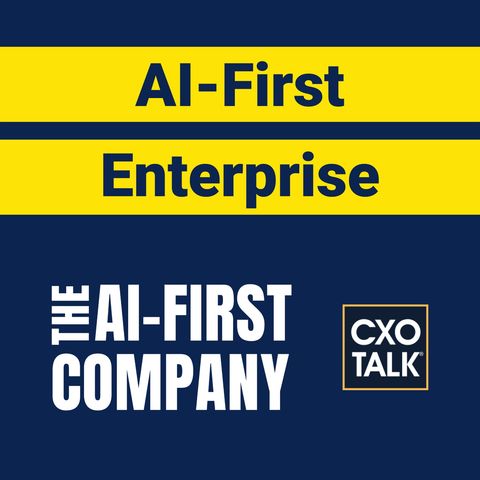Chief Information Officer: Enterprise AI and the CIO

Regístrate gratis
Escucha este episodio y muchos más. ¡Disfruta de los mejores podcasts en Spreaker!
Descarga y escucha en cualquier lugar
Descarga tus episodios favoritos y disfrútalos, ¡dondequiera que estés! Regístrate o inicia sesión ahora para acceder a la escucha sin conexión.
Descripción
How should Chief Information Officers manage AI in the enterprise, and what challenges may arise? Every CIO must consider these questions from both enterprise technology and business leadership perspectives. Author...
mostra másAuthor and AI investor Ash Fontana explains the CIO role and CIO responsibilities when developing organizational capabilities for AI, which he calls the AI-first company.
The conversation covers these essential topics:
-- What are the CIO’s first steps to adopting enterprise AI?
-- How should CIOs start with enterprise AI?
-- How much technical knowledge about machine learning models should business leaders possess?
-- What are “data learning effects”?
-- What is Lean AI?
-- Should the CIO or CTO be responsible for investments in AI?
-- Culture change and AI adoption
-- Enterprise AI investment and financial return
-- How to overcome obstacles to AI adoption in the enterprise?
====
Read the full transcript and watch other videos: https://www.cxotalk.com/episode/chief-information-officer-enterprise-ai-cio
Subscribe to our newsletter: https://www.cxotalk.com/subscribe
====
Ash Fontana is author of the book The AI-First Company. He is an investor focused on AI-first companies at Zetta Venture Partners since 2014. Before Zetta, Ash launched syndicates at AngelList - the biggest startup investing platform in the world that now manages over $2B. Simultaneously, Ash made investments in Canva, Mixmax and others.
====
A few excerpts from the conversation:
Michael Krigsman: In effect, what you're saying is this part of the company that's focused around AI, ideally, it would be the entire company, but let's just start small. This part of the company is using the delivery, using the use of AI tools, and then the delivery of outcomes relating to those tools as its kind of organizing principle. Is that an accurate way to summarize it?
Ash Fontana: Yeah, I think that's a good way to summarize it. But again, there's so much nuance across the board here around the degree to which you focus on this, depending on where you're at in your journey, depending on whether you're at the phase where you're just experimenting with a few models to sort of test, like, can we actually make this prediction about the demand of the thing we're selling, the demand of the apparel we're selling next season? Can we make a prediction about a trend in this industry with our consumers, whether they're going to buy this or that color next season? Can we actually make a prediction around this delivery time in our supply chain? Can we do that?
Are you at this stage where you're experimenting with that and really trying to discover from the data that you have whether you can do that? If so, the degree to which you invest in data collection, data infrastructure, and the degree to which you jump in the deep end of machine learning different models is very different to the point at which you've done those experiments, you're sure that you can make these predictions, and you want to really double down.
This is where I introduce this concept of latent AI. But again, I think that's a good way to put it. There's a lot of nuance depending on the phase you're at. Different parts of your organization can mean different parts of the journey.
The part of your organization that is on the marketing side can be really far ahead on the AI journey because there's a lot of data available to survey customers and run predictive models around what different segments will do and how they behave, whereas the part of the organization that's responsible for production might be a bit further back or earlier in the journey because fully roboticizing a production line is quite an undertaking. You'll want to do more experiments and little bits of the production line first, so it depends on where you are.
Información
| Autor | Michael Krigsman |
| Página web | - |
| Etiquetas |
Copyright 2024 - Spreaker Inc. an iHeartMedia Company
